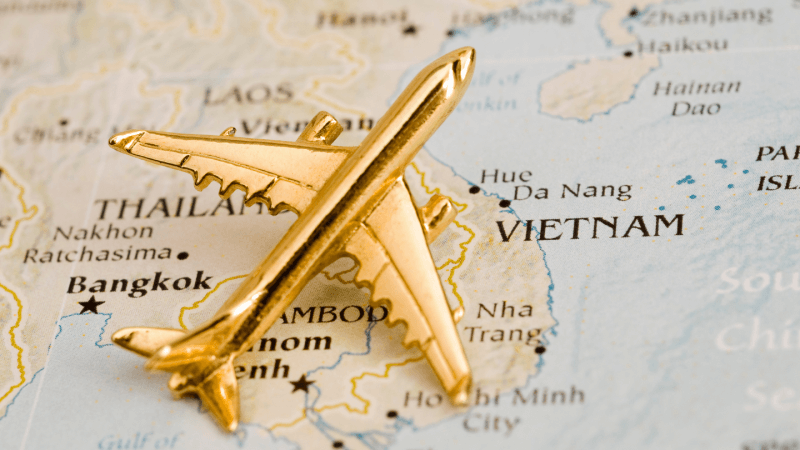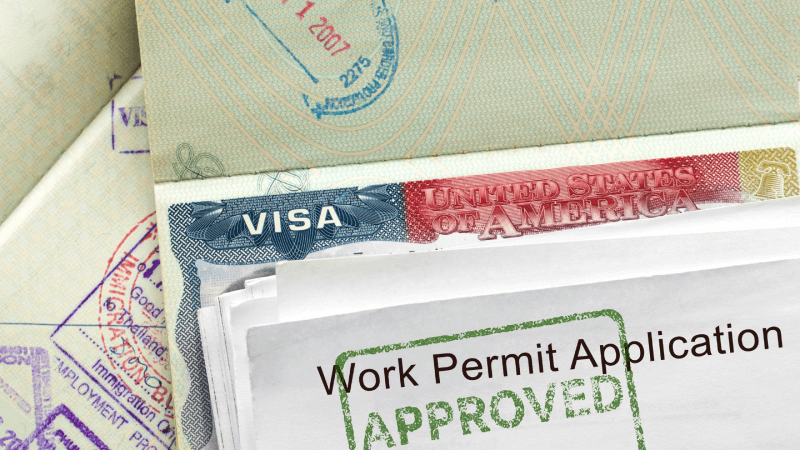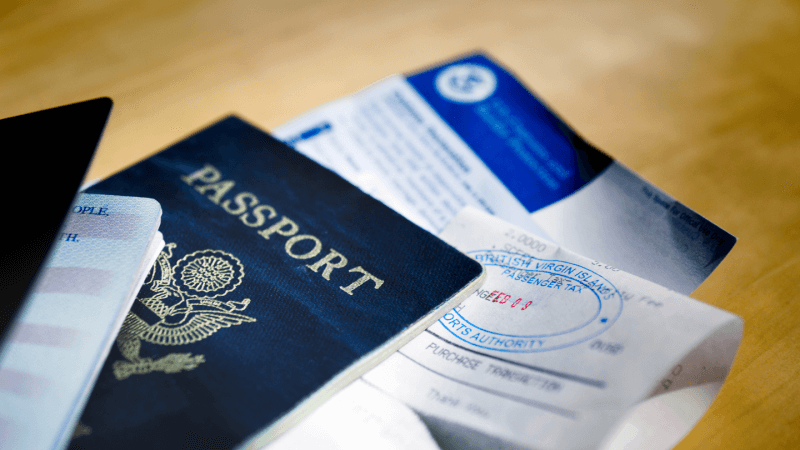Thinking about going to Vietnam?
Sorting out visa requirements is one of the first things you need to do to have a seamless entry. Visa requirements for Vietnam depend on your nationality and the purpose of your visit.
This guide gives you a simple breakdown of who needs a visa, who doesn’t, and how to apply if you do. Prepare to experience Vietnam’s rich culture and beautiful landscapes with confidence!
Don't forget to bring your iRoamly Vietnam travel eSIM along for fast and reliable connectivity throughout your trip.

Do You Need a Visa to Visit Vietnam?
In order to enter Vietnam, most travelers will need to provide a valid passport and a visa, or a pre-approved visa on arrival.
You will need at least six months’ validity left on your passport, and a sheet that is blank for visa stamping. There are some exceptions though, based on agreements between Vietnam and other countries.
Countries Exempt from Vietnam Visas
Vietnam extends visa exemption to nationals of 25 countries, effective from Resolution No. 32/NQ-CP dated 15th March 2022. Exemptions are typically granted to those holding an ordinary passport, valid for at least six months, and with at least two blank pages. Here’s a brief summary:
General Exemption
Vietnam visa exemption country table:
No. | Country | Duration of stay | Purpose of entry |
1 | Chile | 90 days | Purpose of generating income is not allowed |
2 | Panama | 90 days | Purpose of generating income is not allowed |
3 | Cambodia | 30 days | N/A |
4 | Indonesia | 30 days | N/A |
5 | Kyrgyzstan | 30 days | N/A |
6 | Laos | 30 days | N/A |
7 | Malaysia | 30 days | Tourism, conference, seminars, visiting relatives, business negotiation |
8 | Singapore | 30 days | Purpose of generating income is not allowed |
9 | Thailand | 30 days | N/A |
10 | Philippines | 21 days | N/A |
11 | Brunei | 14 days | N/A |
12 | Myanmar | 14 days | N/A |
13 | Belarus | 45 days | N/A |
14 | Denmark | 45 days | N/A |
15 | Finland | 45 days | N/A |
13 | France | 45 days | N/A |
17 | Germany | 45 days | N/A |
18 | Italy | 45 days | N/A |
19 | Japan | 45 days | N/A |
20 | Norway | 45 days | N/A |
21 | Russia | 45 days | N/A |
22 | South Korea | 45 days | N/A |
23 | Spain | 45 days | N/A |
24 | Sweden | 45 days | N/A |
25 | United Kingdom (Not applicable to BNO) | 45 days | N/A |
Citizens from Germany, France, Italy, Spain, the UK, Russia, Japan, South Korea, Denmark, Sweden, Norway, Finland, and Belarus enjoy a 45-day visa-free stay regardless of their passport type or entry purpose.
Diplomatic Passports
Holders of diplomatic passports from certain countries can enter without a visa and stay for durations ranging from 15 to 90 days, based on specific diplomatic agreements.
Country-specific data is available from the official website: https://lanhsuvietnam.gov.vn/
Overseas Vietnamese and Five-Year Visa Exemption
The Vietnamese government offers a 5-year visa exemption for overseas Vietnamese and their relatives. This exemption allows for multiple entries and a stay of up to 180 days per entry. Should you wish to stay continuously beyond this period, a visa extension is required.
APEC Business Travel Card (ABTC) Holders
ABTC holders are entitled to visa-free entry for business trips lasting up to 60 days, facilitating smoother travel within the APEC region.
Phu Quoc Island: A Visa-Free Haven

Phu Quoc Island offers a unique visa exemption not found elsewhere in Vietnam:
Duration: Up to 30 days without a visa.
Entry Points: Travelers can enter through Phu Quoc International Airport or via international sea ports like Ha Tien and Duong Dong.
Conditions: Visitors must have a passport valid for six months from arrival and proof of onward travel within 30 days.
Policy Intent: This exemption is designed to promote tourism to Phu Quoc, located in the Gulf of Thailand, and is available to those arriving directly or through other Vietnamese international borders.
Types of Vietnam Visas
Vietnam caters to various travel purposes with different visa types. Understanding these can help you choose the right one for your needs.
Vietnam visa type table
Visa Type | Description and Information | Validity |
NG1 - NG4 | Diplomatic Visas | No longer than 12 months |
LV1 - LV2 | Working with Vietnam authorities or parties | No longer than 12 months |
ĐT | Investor Visas | No longer than 5 years |
DN | Working with Vietnamese enterprises | No longer than 12 months |
NN1 - NN2 | Chief Representative Office in Vietnam, Head of Project Office of foreign NGO | No longer than 12 months |
NN3 | NGOs' Staff, Rep office in Vietnam | No longer than 12 months |
DH | Student/Internship | No longer than 12 months |
HN | Meetings/Conferences | No longer than 03 months |
PV1 | Journalists with permanent residence in Vietnam | No longer than 12 months |
PV2 | Journalists with short term residence in Vietnam | No longer than 12 months |
LĐ | Foreign workers/Working visas | No longer than 2 years |
DL | Tourist/Visitor Visas | No longer than 03 months |
TT | Dependents of LV1, LV2, ĐT, NN1, NN2, DH, PV1, LĐ | No longer than 12 months |
VR | Family visits, other purposes | No longer than 06 mont |
For details on visa types, please visit the official website: https://www.myvietnamvisa.com/vietnam-visa-types.html
Tourist Visa (DL)

The Tourist Visa, categorized as DL, is intended for travelers visiting Vietnam for leisure. This visa permits an initial stay of 15 to 30 days, with the possibility for extensions. It is ideal for those looking to explore Vietnam's rich culture and natural beauty.
Business Visa (DN1, DN2)
Business Visas are divided into two categories, DN1 and DN2, tailored to different business-related activities:
DN1: For individuals collaborating with Vietnamese companies or organizations that are legally registered in Vietnam. This visa facilitates meetings, contract negotiations, and other partnership activities.
DN2: For foreign nationals conducting business in Vietnam on their own or representing foreign businesses. This includes activities like setting up business operations or selling goods and services in Vietnam.
Work Visa (LD)

The Work Visa, classified as LD, is for individuals who are employed by Vietnamese companies and are staying in the country for professional reasons. This visa can be extended up to one year and requires either a work permit or a work permit exemption certificate.
LD1: Issued to those with a work permit exemption.
LD2: Required for those with a regular work permit, applicable to most foreign workers in Vietnam.
Family Visit Visa (TT)
The TT visa or Family Visit Visa is designed for family members of Vietnamese residents or of those holding certain types of long-term visa. It is typically issued for a maximum of 12 months with an issue date at least 30 days before that of the sponsor’s visa.
Specific Eligibility:
Available for spouses, children, parents of Vietnamese citizens or of foreigners holding a long-term visa like LV2, LS, DT, NN, DH, PV, LD, etc.
Investor Visa (DT)

The Investor Visa is designed for foreign nationals investing in Vietnamese enterprises and is categorized into several types based on the investment amount:
DT1: For investments of at least 100 billion VND (~4.25 million USD), valid for up to 10 years.
DT2: For investments between 50 billion and 100 billion VND (~2.12 million to ~4.25 million USD), valid for up to 5 years.
DT3: For smaller investments between 3 billion and 50 billion VND (~127,000 to ~2.12 million USD), valid for up to 3 years.
DT4: For investments of less than 3 billion VND (~127,000 USD), valid for 1 year.
These visas can be extended with a temporary residence card as the investment continues.
Vietnam Multiple Entry Visas
3 Months Multiple Entry e-Visa Approved, starting Aug 15, 2023. A 3-Month Multiple Entry e-Visa will be available from mid August. Get a multiple entry visa soon!
For those needing to travel to Vietnam regularly, be that for family, tourism, or business – or all three at once – there are a number of multiple entry visas on offer, catering to both regular travelers and those with ongoing business or family ties to the country.
Vietnam Multiple Entry Visa Types Table
Vietnam multiple entry visas come in five categories by duration, and each of these five kinds have their own list of who can apply. However, regardless of which specific type you apply for, you can enter and exit the country as many times as you like, as per the below table, within the visa’s validity period:
entry visa types | Times of entry/exit | Validity of visa | Purposes | Notes |
1-month | Unlimited | 30 days(1 month) | Tourists Business | N/A |
3-month | Unlimited | 90 days ( 3 months) | Tourists Business | Each entry allows a maximum stay of 30 days for tourists, and 90 days for business travelers |
6-month | Unlimited | 180 days ( 6 months) | Business travelers | Each entry allows a maximum stay of 90 days |
1-year | Unlimited | 1 year | American passport holders only Business | Each entry allows a maximum stay of 90 days |
5-year | Unlimited | 5 year | Overseas Vietnameses citizens Foreigners who are spouses, childrens, parents of Vietnamese overseas or Vietnamese citizens | A certificate of visa exemption Each entry allows a maximum stay of 90 days |
Requirements and Fees for Multiple Entry Visas
When applying for a multiple entry visa to Vietnam, applicants must fulfill specific requirements to ensure a smooth application process. Here are the details on the necessary documentation and the associated fees:
Requirements
Valid Passport: You’ll need a passport that’s valid for at least six months beyond your departure from Vietnam – aim for a year validity to be on the safe side if you’re planning multiple entries or extended stays.
Photos: Two recent passport photos must be submitted with your application. These should be sized at 4x6 cm, or close to 2x2 inches, and be in line with standard passport requirements.
Application Form: You must complete an application form for your visa. This is usually available online, or can be obtained from the Vietnamese embassy or consulate.
Supporting Documents: Depending on the type of visa you’re getting, you may need to provide supporting documents such as an invitation letter from a Vietnamese company, proof of family ties in Vietnam, or other relevant material.

Fees
Visa Application Fee: Costs for a multiple entry visa vary from $50 to $135, depending on the length of the visa and how many entries you’re applying for.
Stamping Fee: When you arrive in Vietnam, you will need to pay a stamping fee to activate your visa. This costs $25 for a single entry visa, up to $50 for a multiple entry.
Processing Time and Cost: For a multiple entry visa, standard processing time is 3 business days, not including weekends. Expedited processing is available for an additional fee, which once again will depend on how quickly you need it.
How to apply for Vietnam visa?
Understanding the different ways to apply for a Vietnamese visa is essential for ensuring a smooth travel experience. Here’s a breakdown of each method, highlighting the specifics of how to apply and what each entails:

Work visas are usually applied for through Vietnamese employers, who will assist in obtaining the necessary approvals from Vietnam Immigration Department.
Family visit visas can be applied for in Vietnam or at Vietnamese diplomatic missions abroad, depending on the applicant’s place of residence.
Visa on Arrival
Characteristics: The Visa on Arrival (VOA) is convenient for travelers who may not have the time or ability to apply for a visa at an embassy before their trip. It requires an approval letter, which must be obtained before travel.

Applicable Vietnam visa types: tourist visa, business visa, multiple entry visa
How to Apply:
Online Application: Visit an official visa service website or through a travel agency to apply for an approval letter.
Receive Approval Letter: This letter is typically emailed to you within a few days of application.
Arrival in Vietnam: Present the approval letter at the visa counter upon arrival in Vietnam.
Documentation: Bring two passport-sized photos and your passport that must be valid for at least six months.
Visa Stamping Fee: Pay the fee, which can vary from $25 to $50, depending on the number of entries and the duration of stay allowed.
E-Visa

Characteristics: The E-Visa is a fully digital visa for stays of up to 30 days. It is a single-entry visa, which means it's ideal for tourists and short business trips.
Applicable Vietnam visa types: tourist visa, business visa, multiple entry visa
How to Apply:
Online Portal: Access the Vietnam Immigration portal to start the e-visa application process.
Fill in the Application: Provide personal and travel details, and upload a scan of your passport and a recent photo.
Fee Payment: Pay the application fee, generally around $25, via a credit or debit card.
Receive E-Visa: The visa is usually processed within 3 business days, after which it can be downloaded from the portal.
Print E-Visa: Carry a printed copy of your e-visa when traveling to Vietnam.
Embassy Visa
Characteristics: Applying for a visa through a Vietnamese embassy or consulate is the traditional method, suitable for those who prefer or require a visa type not available through e-visa or VOA, such as multiple-entry visas or longer stays.

Applicable Vietnam visa types: tourist visa, business visa,, multiple entry visa
How to Apply:
Locate the Nearest Embassy: Find the closest Vietnamese diplomatic mission.
Gather Required Documents: This typically includes the visa application form, passport, photos, and possibly additional documents such as an invitation letter or flight and hotel bookings.
Submit Application: Visit the embassy to submit your application or send it by mail if allowed.
Pay the Visa Fee: Fees vary depending on the type of visa and the duration of stay; check with the embassy for the exact amount.
Receive Your Visa: Processing times can vary; it's advisable to apply well in advance of your travel dates.
FAQ
Do you need a visa for Vietnam as an Indian?
Yes, citizens of India must have a visa to travel to Vietnam. They can apply for an eVisa, obtain a visa on arrival, or apply for a visa from a Vietnamese embassy or consulate before traveling.
Do Chinese citizens need a visa for Vietnam?
Yes, Chinese passport holders are also required to hold a valid visa when traveling to Vietnam. They can follow the same process as Indian nationals, applying for an eVisa, a visa on arrival (for eligible travelers), or approaching a Vietnamese embassy or consulate.
How long does it take to get a Vietnam eVisa?
Vietnam eVisa processing typically takes around 3 business days, but travelers should allow at least a week before their intended departure date to accommodate for any unexpected delays or additional documentation.
Summary:
Navigating Vietnam’s visa policies can be straightforward with the right information. This guide provides you with detailed insights into visa requirements, exemptions, and the application processes for various types of visas.
Once your visa is sorted, make sure to explore the unmissable destinations in Vietnam for an unforgettable experience. Prepare in advance to enjoy a hassle-free travel experience to this culturally rich and scenic country!


